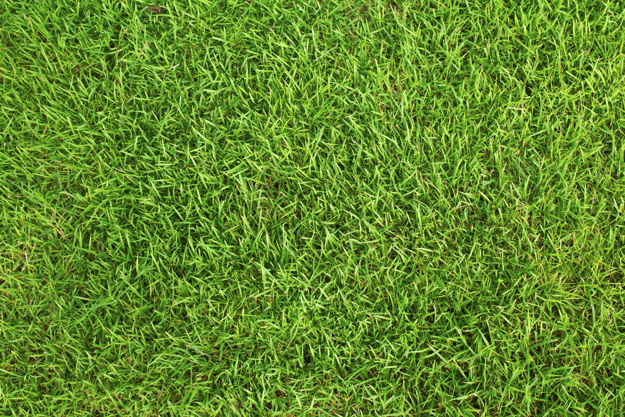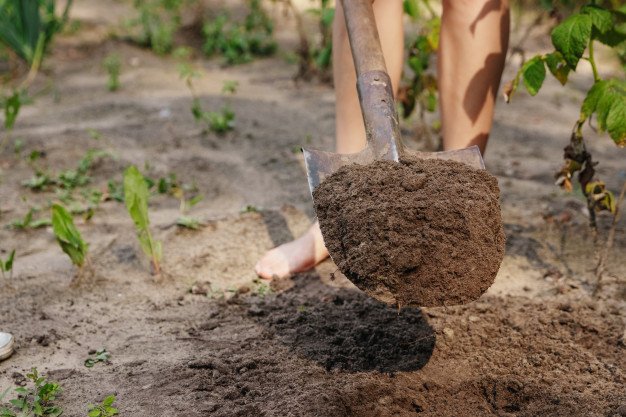Are you are giving up on the idea of having a lush and healthy lawn because your yard is full of rocks and hard dirt? I almost did but thorough preparation, hard work, and patience enabled me to have a beautiful lawn that was the envy of my neighbors. Let me share the ideas about how to plant grass seeds on hard dirt.
Ask any of the homeowners who have successfully planted grass on hard dirt how she did it and her answer would be as simple as using a shovel to break up the dirt or soak it in water to allow it to loosen then plant the grass seeds.
Another option may be to plant grass seeds on a layer or 2 of potting soil laid over hard dirt. Easier read than done.
Also Read: 5 Best Vegetables You Should Try Growing In Your Garden
What Are The Best Grass Seeds?
Here some of the best grass seeds are given below that may be very useful for cultivation in 2021. These seeds are enough good for growing in hard dirt.
1. Zenith Zoysia Grass Seed
Zenith Zoysia Grass Seed is 100% pure seed and suitable for those People in Drought Prone Places. On the other hand, It is quite expensive but it is dense and coarse. It includes two pounds of seed without fillers.
2. Kentucky 31 Tall Fescue
Kentucky 31 Tall Fescue is best for reaching huge areas. It is more useful than other versions of cool-season grass. Kentucky 31 Tall Fescue produces grass that has broad leaves. It is good for big lawns or parks.
3. Pennington Smart Seed Dense Shade
- Pennington Smart Seed Dense Shade is suitable for shady areas.
- These types of seeds are using a less amount of water compared to ordinary grass seeds.
- On the other hand, It will not grow in direct sunlight as it is suited for the areas which have less sunlight(direct sunlight).
You May Also Like: All You Need To Know About Resurrection Plant and its Facts
4. Jonathan Green 10322 Black Beauty
- Jonathan Green 10322 Black Beauty is suitable for regions with sandy fill.
- It holds naturally insect repellent grass and preserves moisture.
- It preserves moisture in the leaf and is drought resistant. Jonathan Green 10322 Black Beauty also includes Fine Fescue.
5. X-Seed Ultra Premium
- X-Seed Ultra Premium is suitable for sun and shade areas.
- It is a mixed seed option that germinates fast.
- It is well for Central and Northern United States climates.
- This seed can be the best if you want to plant grass seeds on hard dirt.
6. Scotts Turf Builder Grass Seed
- These Bermuda seeds are pretty tough. As a result, the heat and drought-bearing potentials are high in comparison to the other types of grass.
- It will create a very thick and durable lawn.
- Seeds are uncoated, so the water absorption potentials are much higher.
- High drought tolerance is the most significant benefit of having these seeds on your lawn.
7. X-Seed Moisture Booster Plus Bermuda Grass
- These seeds are entirely imported from Japan.
- And these grass seeds have a modest growth rate.
- It can grow under the full sun and also have better water-resistant coatings.
- But you require immense patience to grow this grass on the lawn.
- Using the single pack, you can cover 2 000 square feet of your existing lawn.
Here Are The Tips On How To Plant Grass Seed On Hard Dirt:

There are certain steps that you need to follow if you want to know how to plant grass seed on hard dirt.
1. Collect All The Debris
Gather rocks, sticks, and all debris you may find on your lawn. Soak dirt in water or use a shovel to break them up so they will loosen and be easier to pick up.
2. Get Rid Of The Weeds
Cut old sod with a sod cutter or till the remaining grass in the soil. Tilling the remaining grass though will not get rid of the roots of unruly weeds.
3. Loosen Up The Soil Blanket
Use a rototiller to loosen the soil to as deep down as 6 inches. Do this only with dry soil.
Till 1 to 2 inches of compost or peat moss all over the soil to as deep as 18 inches. The amount of compost to use should be equivalent to about 25% – 50% of the weight of the soil.
4. Level Out The Soil
Use a rake to level out the soil and remove any debris that has been tilled up.
Fill up your lawn roller with water and run it across your tilled lawn. This will make your ground firm.
5. Drop The Seeds
Load your grass seed into a drop seed spreader. Follow the directions on the bag of grass seed regarding the amount of grass seed to spread for every 1,000 square feet. Set the dial of your spreader accordingly.
Evenly spread the grass seed over your entire lawn. You can also use a rake to spread your grass seed making sure it is within the ¼ inch top of the soil.
Press the grass seed more into the soil using a lawn roller (empty).
6. Use The Fertilizer
Divide 4 to 6 pounds of nitrogen fertilizer (slow-release type) into 4 equal parts. For every 1,000 square feet, apply 1 pound of fertilizer throughout the entire year. Do the application in 8-week intervals starting with the growing season and through summer, spring, and fall.
7. Watering Your Lawn
Water your lawn for 15 minutes each time, two to three times a day. You may need to adjust your watering schedule as applicable because your goal is to have moist and not soggy soil. After the first moving session, cut down on the watering by limiting it to 1 inch each week broken down into 2 watering sessions.
Tips To Maintain The Grass Seed On Hard Dirt
As your grass grows to be about 3 inches, start mowing your lawn making sure to keep warm-season grass at about 1-2 inches tall and cool-season grass at 2 inches tall.
1. Cutting And Trimming
Depending again on the grass variety, this may be about every four to six days. Keep on moving regularly until you are able to cut less than 1/3 of the grass at each mowing process. It is also ideal to mow grass with sharp mower blades.
2. Fertilizer
Use Lime & Fertilizer Spreaders to evenly supply the required nutrients to your grass. Proceed further to know more about how to plant grass seeds on hard dirt.
3. Soil Aeratetion
Aerate the soil when the soil is dry and during active growth, meaning two times a year. Aerate to as deep as 3 inches. As you can see, it is feasible to plant grass seeds on hard dirt. While hard dirt is not the best environment to grow grass seeds, improving the soil is highly possible.
Of course, you will be in for some hard work, but the resulting lush green lawn will be all worth it. It will be as if you grew your grass seeds on rich soil and this will solve your issue on how to plant grass seeds on hard dirt.
You May Also Like: How much does a yard of topsoil weigh?
When Is The Best Time To Plant Grass Seed?

Planting seeds symbolize an expenditure of money, time, and hope. Planting grass seed depends on the type of lawn you are planting and the place you live in.
Whether you grow warm or cool-season grasses, timing plays a vital role. When the temperature of the soil is between 50-65 degrees Fahrenheit, Cool-season grass seed grows fast.
Freshly planted seeds need consistent soil moisture. For warm-season grasses, Spring Season is best. In natural germination seeds, grass types and varieties vary. In the underground, new grass seedlings take place in their initial growth.
You can also do research that when is the best time to plant grass seed or you can take advice from professionals before you start seeding. However, if you are unable to grow grass seed on hard dirt then you can focus on installing artificial grass in your garden.
Also Read: Amazing Ways to Maximize Your Profit at Trading
How Long Does It Take For Grass Seed To Grow?

Depending on the type of variety, the growing time for grass seed varies from five to thirty days. In cold temperatures, it can be even extended than this.
How long does it take for grass seed to grow? See, it depends on which place you are living in and what kind of grass seed you are growing. If you are looking for a low-maintenance grass seed then centipede grass seed is your best option.
There are mainly some of the factors that play a key role in grass seed to grow:
🌡Temperature – The temperature of the air and the temperature of the ground are the primary ingredients for seed grass to grow. It increases the growth rate of the seed grass.
☁ Season – The season also has an impact on the seed as it plays a vital role in seed germination. In the cool season, the grass seed does not grow and it remains dormant for a certain period of time. But as soon as the warm season arrives, the seed grass begins to grow.
☀ Sunlight – Sunlight also plays some role in the germination of the grass seed, whether directly or indirectly.
Also Read: 4 Must-Have Ingredients for Homemade Beauty Products
Frequently Asked Questions (FAQs):
There are several steps involved while you want to plant grass seed on hard soil. Some of the essential steps are as follows:-
1. Aerate the topsoil.
2. You need to do soil testing.
3. The hard ground you need to tilt.
4. Mix the soil with fertilizer.
5. Make a selection of the right seed.
6. Cover the topsoil by planting the grass seed over it.
You can easily grow the grass on the hard dirt. In most cases, the particles are so compactly pressed and tightly packed that it fixes the grass on air.
Grass grows well on loose soil, not on compacted soil. Keep your concept clear about it.
The easy answer is Yes you can throw the seed on the dirt. You have to make your arrangement in the correct order.
Conclusion!
Do you also have a lawn with hard dirt? Have you tried planting grass seeds on them? I hope the instructions I shared above can also allow you to have a green lawn just like what I have now despite starting off with soil with hard dirt. ‘How to plant grass seed on hard dirt’ seems to be tricky but believe me it’s far easy and simple.
If you have additional suggestions, please feel free to share them in the comments section on how to plant grass seed on hard dirt.
Read Also:





















